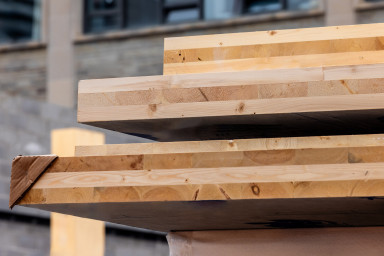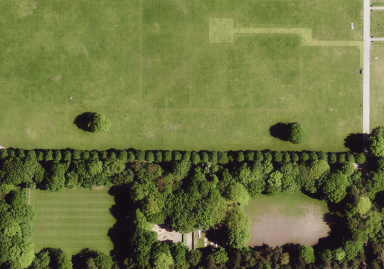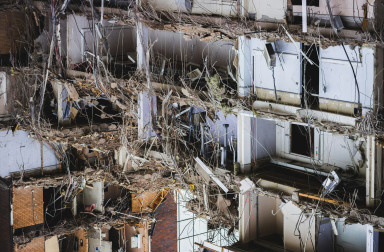Mass timber metropolis
Navigating uncertainties around wood in construction
Timber is making a comeback in urban construction sites and is often portrayed as an efficient and renewable alternative to conventional building materials associated with significant CO₂ emissions. Yet, despite the natural ability of trees to bind atmospheric carbon, mass timber, meaning the family of contemporary structural timber products combining sawnwood and adhesive, stands at the intersection of multiple uncertainties. These include the consequences of established growing practices in monocultures, potentially wasteful manufacturing, and inconsistent end-of-life treatments. In addition, climate change contributes to volatile availability of timber species preferred in construction, unpredictable pricing, and the potential need for adaptation of existing timber structures to changing atmospheric conditions such as increasing humidity. Considering architecture as a socio-material process, this research follows the practices of handling mass timber within the German building industry. It focuses on the roles of decision-making, sourcing, and professional assessment and the shifts in these occurring due to the uncertainty of climate change.
- structural mass timber
- decision-making
- increasing uncertainty
- controversy
- non-human agency
- materiality
- praxiography
Context
The discipline of architecture faces a particularly challenging moment, as its current conditions of production are identified as key contributors to climate change. As a response to the emissions generated by conventional building materials, many professionals are advocating for a shift back to the use of wood. The promise of realizing complex structures that maintain urban density and energy efficiency, however, relies on mass timber. This group of engineered wood products combines sawnwood and adhesives or friction-based fastening systems to form durable, load-bearing panels. Although the material is more and more prominent on construction sites,1 evident controversies challenge the notion of mass timber’s carbon-capturing ability and sustainability,2 highlighting growing concerns of the effects of climate change on established supply chain arrangements.3
These controversies extend beyond quantitative considerations and the development of emission-reducing technologies emphasized by publications directed towards planners and industry events. Navigating the cross-disciplinary frictions involves engaging with doubt, indeterminacy, and the politics of construction practices. Climate change cannot be treated as a stable and linear phenomenon but must be viewed as a condition of unexpected interactions and uneven distribution of effects that create uncertainty.
Aims
My proposal aims to contribute to the field of science and technology studies (STS) by considering architecture not as a static meaning but as a fluid process,4 while also concentrating on constructive materiality and all that it brings – both the physical and the symbolic. In addition, my research is situated within urban political ecology and exemplifies the connection of urban materiality to distant ecosystems and labour networks.5 While existing research addresses the complexity of timber sourcing, my focus lies on how the practices of built environment professionals handling timber evolve and respond to climatic instability.
Research design
The central part of the research is conducted via multi-sited ethnography, defined as following of a singular process – here, mass timber architecture – through multiple locations and stakeholders.6 Practitioners’ hands are the starting point of theorizing, supplemented by expert interviews. The subsequent qualitative content analysis will assign relevant codes for the acquired data and, in line with grounded theory, search for meaning behind descriptive presentation while preserving openness towards the material.7
The research design is divided into three work packages, corresponding to the three sub-research questions. First, planning processes at different stages are followed at a German planning office experienced in designing and constructing with structural mass timber. In an explorative and iterative process, one to three mass timber contractors and/or manufacturers working with the planning office are identified. Participatory observation is complemented by expert interviews to understand and map the supply network and identify key relationships and artifacts involved. Second, an exemplary sourcing site of the commercial spruce forestry in the Harz region is studied through multispecies ethnography and interviews with relevant foresters, activists, and researchers. This is to examine how climate variability impacts the longevity and resilience of the supply chain, while considering the entangled agency of a plantation ecosystem.8 Lastly, the discourse on mass timber is followed through participation in timber industry events and workshops for planners. Through qualitative discourse analysis, the assessment of mass timber by built environment professionals and their response to the challenges of its sustainability is made visible.
Supervisors:
- Prof. Dr. Monika Grubbauer
- Prof. Dr. Sabine Hansmann




